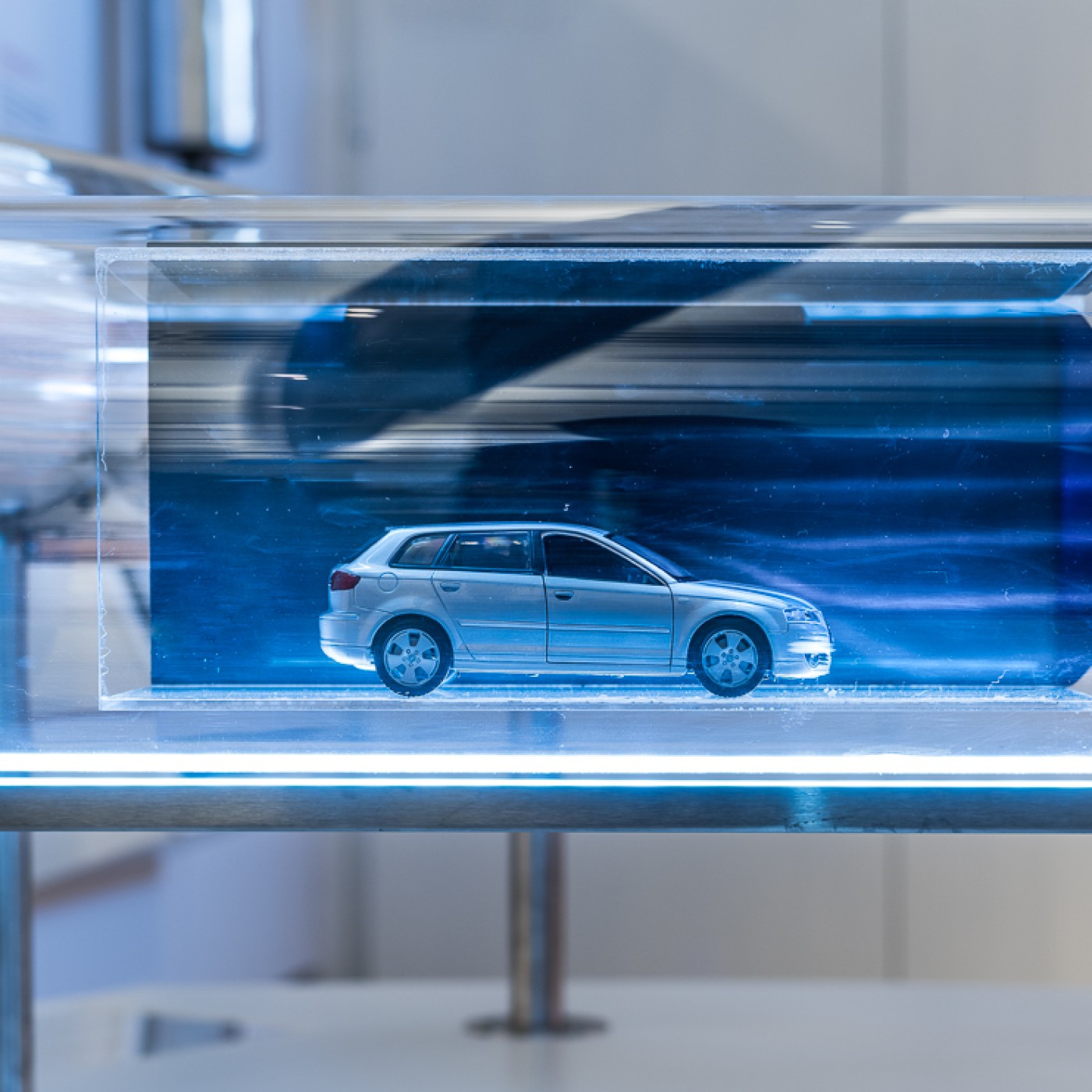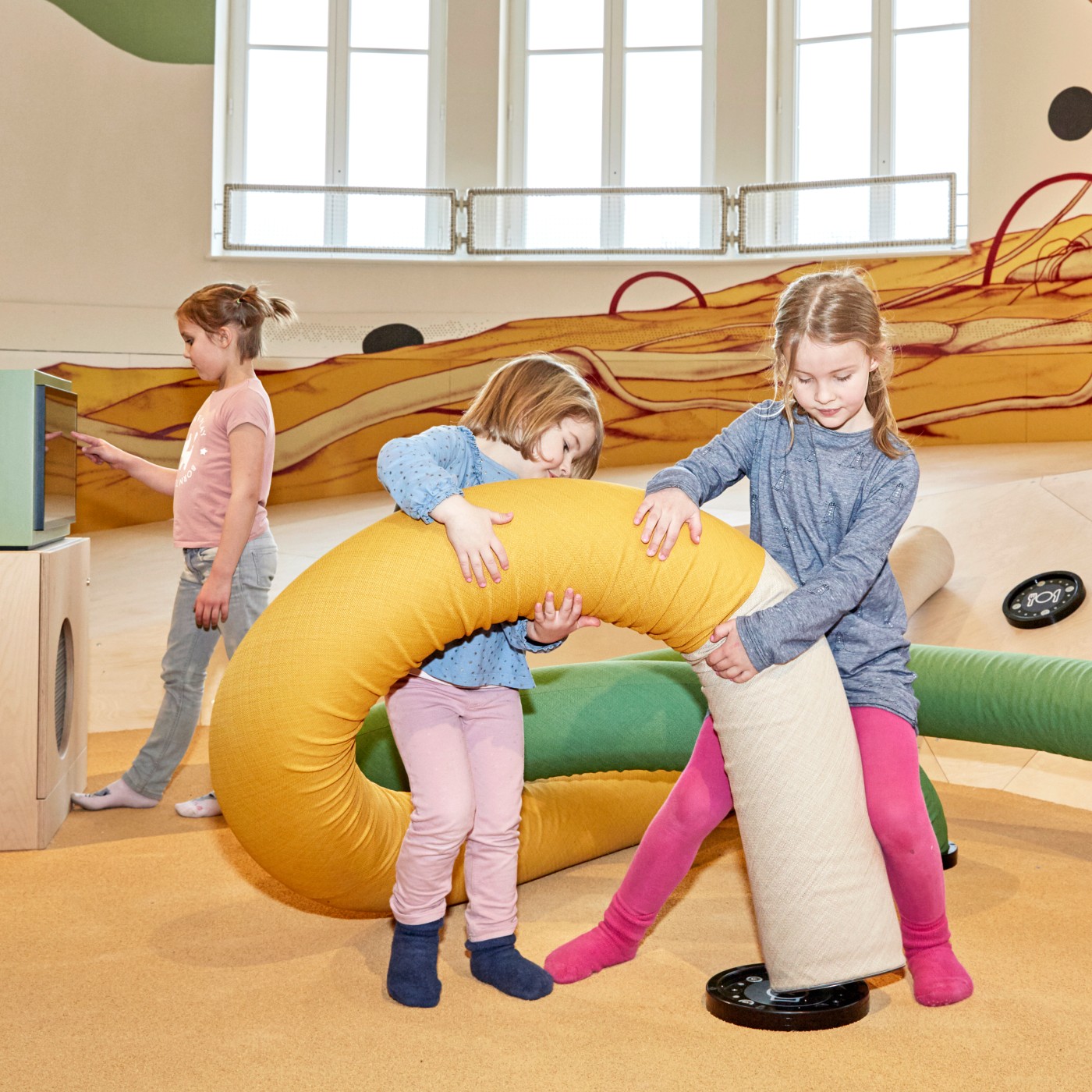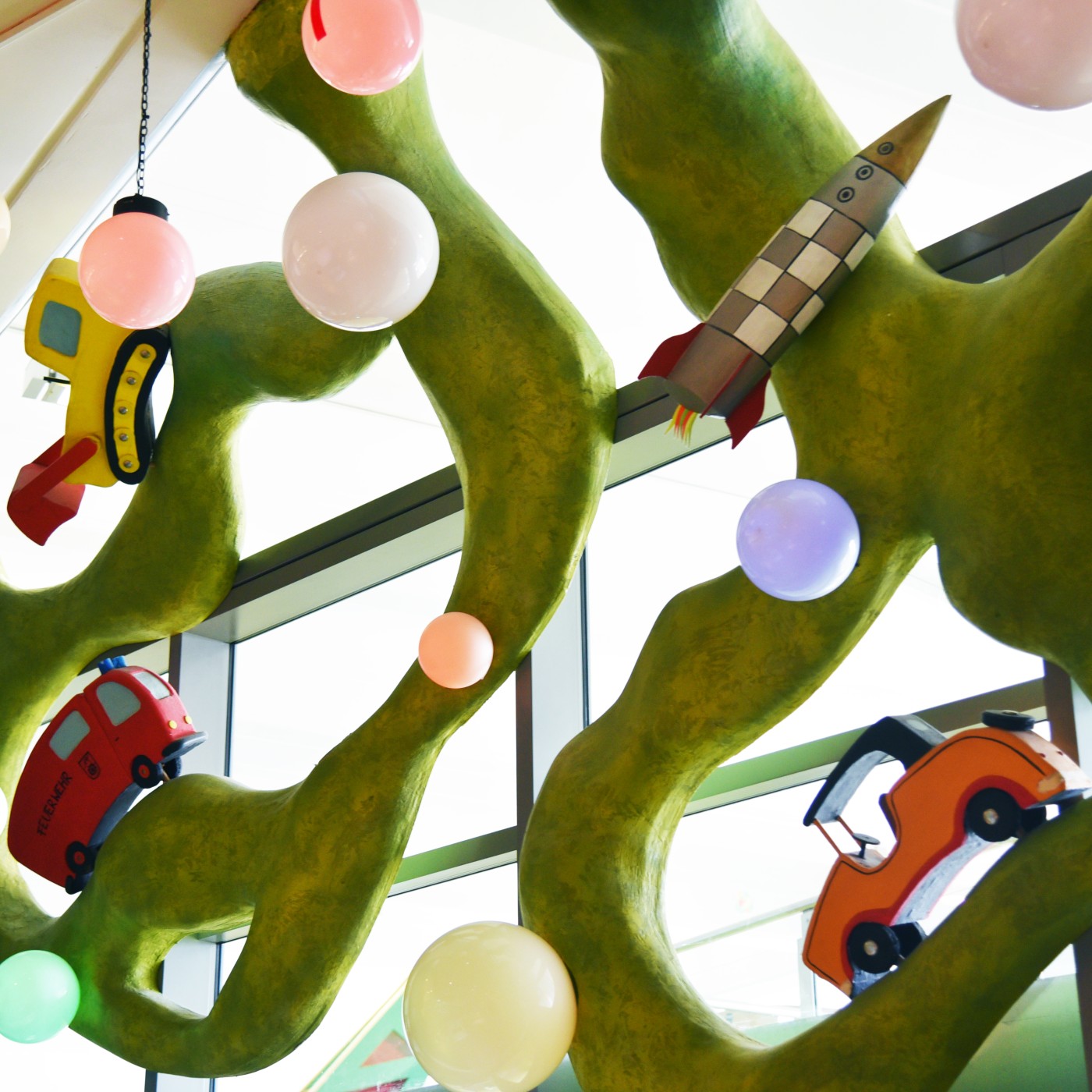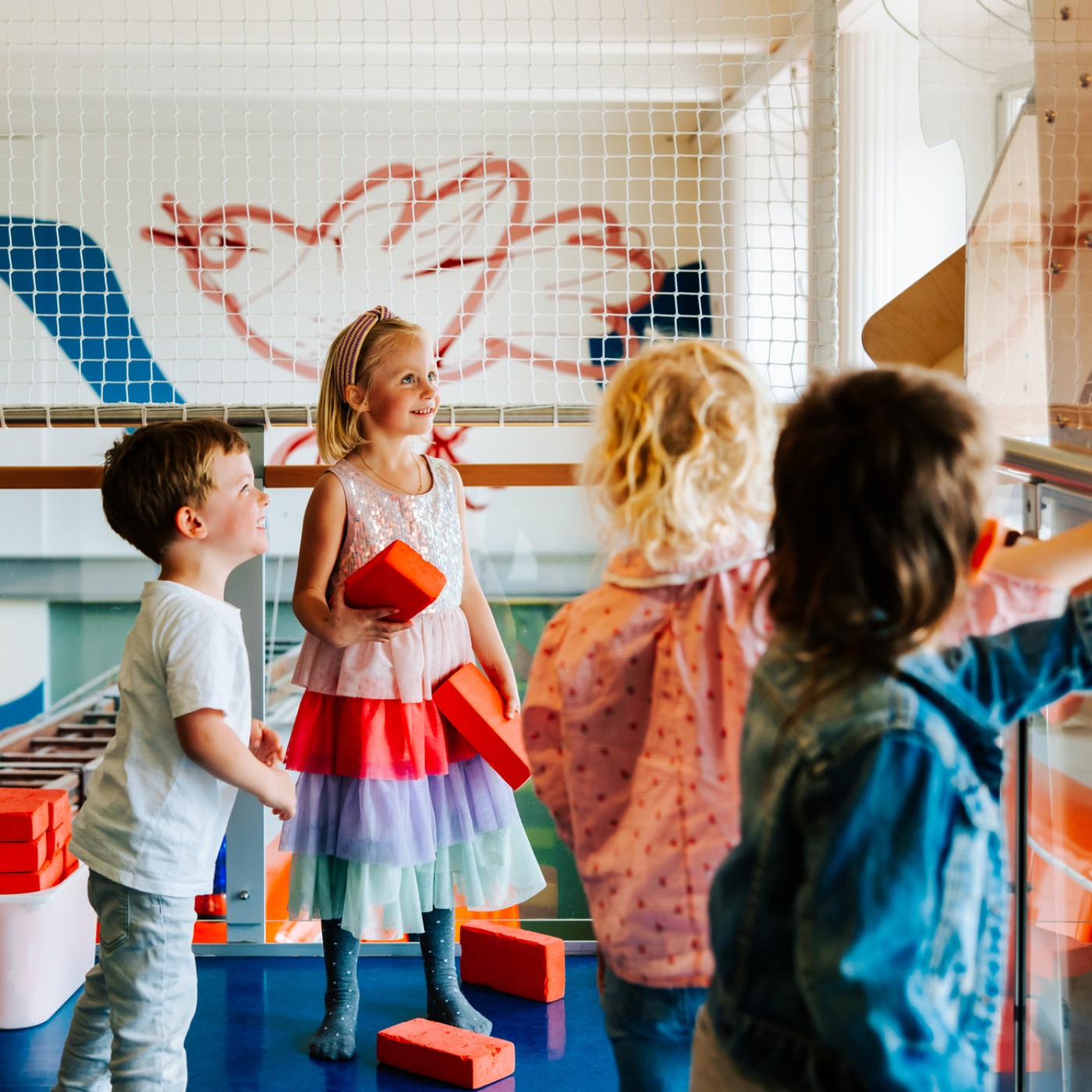In addition to the items in the extensive collection of the Technisches Museum Wien (Vienna Museum of Science and Technology), the interactive exhibits – or “hands-on installations” – are another major attraction for visitors of all ages coming to the museum.
Lifting your big brother’s body weight with ease by using leverage? Or personally experiencing the rigors of generating electricity with the exercise wheel? These are just two of hundreds of examples of interactive experiment stations at the Technisches Museum Wien where visitors can have a go themselves. The hands-on stations invite visitors to actively experience the museum and show how technology and science work in a fun and straightforward way.
But how are these stations created and what kind of work is involved?
At the Technisches Museum Wien, five staff members specialising in mechatronics, software development and electrical engineering take care of more than 250 hands-on installations in the various exhibition areas. The field of hands-on installations has gained extensive expertise in recent years involving the design, development and construction of interactive exhibition elements.
What goes into the making of a hands-on installation?
Whenever a new exhibition is planned, we work closely with the exhibition curators to identify topics that might be suitable for interactive implementation.
The design process itself begins with a series of questions:
• What sort of content do we want to communicate with the hands-on installation?
• Is the topic diverse enough for the hands-on installation to be used repeatedly?
• Is the hands-on installation fun to use?
• Does the hands-on installation appeal to as many of our senses as possible?
• Can it be used by a group of people? Or is it intended to be used by only one person at a time?
• Does the hands-on installation appeal equally to children and adults?
The answers to these questions are incorporated into the specifications, which specify the functions to be performed by the hands-on installation. Hands-on installations have to meet very high requirements as part of a live exhibition. In is not unusual for a hands-on installation to be used more than 100,000 times a year. An additional safety analysis guarantees that hands-on installations do not pose any danger to visitors whatsoever.
Construction and pre-testing
A first prototype is usually built to test individual technical components. It is at this point that any adjustments resulting from the functionality tests are made to the software. The prototypes then provide the basis for the rest of the work performed by the designers and graphic artists.
Team work
At this stage, a multitude of specialists is involved in developing and building the hands-on installations. The extensive collaboration with the museum’s carpentry shop, graphics production and metalworking shop as well as external specialists is just one of many components deserving of mention.
Evaluation
An extensive evaluation is carried out in the “In Motion” hands-on exhibition in collaboration with our science partners, studying visitor behaviour both throughout the exhibition as a whole and in terms of the hands-on installations. The hands-on installations are also fitted with counters to provide further insight into the way they are used.
To date, almost 150 new hands-on installations have been developed and built for special and permanent exhibitions at the Technisches Museum Wien by its own hands-on installation team.
But how are these stations created and what kind of work is involved?
At the Technisches Museum Wien, five staff members specialising in mechatronics, software development and electrical engineering take care of more than 250 hands-on installations in the various exhibition areas. The field of hands-on installations has gained extensive expertise in recent years involving the design, development and construction of interactive exhibition elements.
What goes into the making of a hands-on installation?
Whenever a new exhibition is planned, we work closely with the exhibition curators to identify topics that might be suitable for interactive implementation.
The design process itself begins with a series of questions:
• What sort of content do we want to communicate with the hands-on installation?
• Is the topic diverse enough for the hands-on installation to be used repeatedly?
• Is the hands-on installation fun to use?
• Does the hands-on installation appeal to as many of our senses as possible?
• Can it be used by a group of people? Or is it intended to be used by only one person at a time?
• Does the hands-on installation appeal equally to children and adults?
The answers to these questions are incorporated into the specifications, which specify the functions to be performed by the hands-on installation. Hands-on installations have to meet very high requirements as part of a live exhibition. In is not unusual for a hands-on installation to be used more than 100,000 times a year. An additional safety analysis guarantees that hands-on installations do not pose any danger to visitors whatsoever.
Construction and pre-testing
A first prototype is usually built to test individual technical components. It is at this point that any adjustments resulting from the functionality tests are made to the software. The prototypes then provide the basis for the rest of the work performed by the designers and graphic artists.
Team work
At this stage, a multitude of specialists is involved in developing and building the hands-on installations. The extensive collaboration with the museum’s carpentry shop, graphics production and metalworking shop as well as external specialists is just one of many components deserving of mention.
Evaluation
An extensive evaluation is carried out in the “In Motion” hands-on exhibition in collaboration with our science partners, studying visitor behaviour both throughout the exhibition as a whole and in terms of the hands-on installations. The hands-on installations are also fitted with counters to provide further insight into the way they are used.
To date, almost 150 new hands-on installations have been developed and built for special and permanent exhibitions at the Technisches Museum Wien by its own hands-on installation team.




